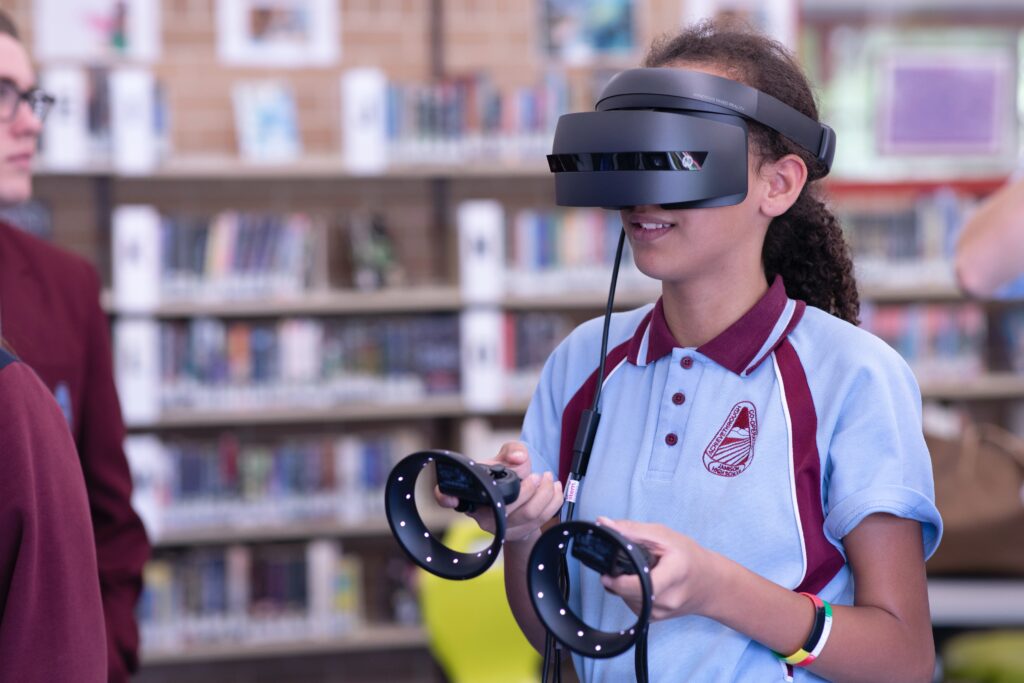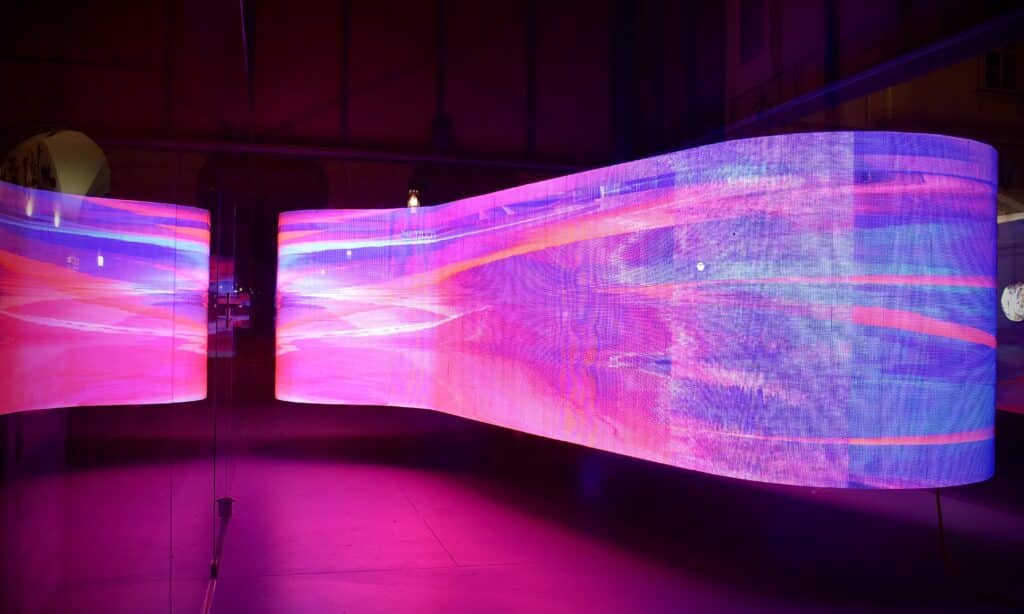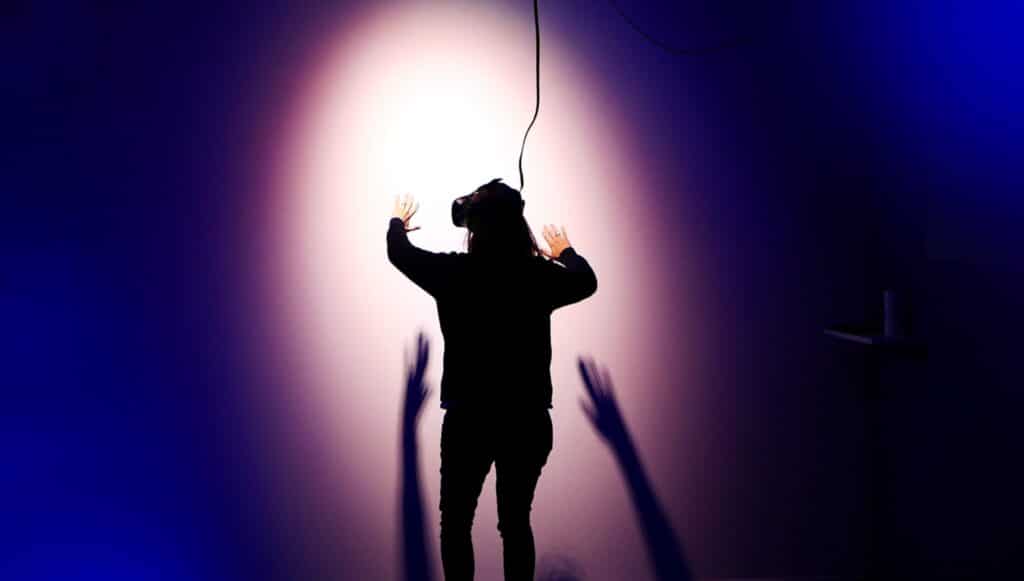When Mark Zuckerberg announced in October 2021 that Facebook was rebranding itself as Meta, it created a buzz surrounding the long-awaited concept of the “metaverse.” Now, the metaverse, a virtual reality-like online platform, is starting to influence the world.
With companies already preparing and even selling virtual clothing for avatars, some are wondering what role cultural institutions, such as museums, libraries and more, will play in this strange new world. In fact, in the metaverse, art itself may drastically change.
Museums and Galleries in the Metaverse
3D and 360° videos already allow for more life-like glimpses into famous sites around the world, including tours of The British Museum. In the metaverse, these tours might become more elaborate. Soon avatars from across the globe may connect and chat while touring the Louvre, the Library of Congress or the ruins of Pompei.
As Zuckerberg said, in the metaverse, “We’ll be able to feel present – like we’re right there with people no matter how far apart we actually are.” At the very least, this means that leaders at cultural institutions should prepare to expand their online presences to accommodate the increasing importance of virtual spaces.
However, the metaverse won’t just change how we view art. It’s likely to change art itself.

Art is Changing
Within the metaverse, art can and likely will be more fluid and interactive thanks to the possibilities that virtual reality presents. Art is and always has been morphing. After all, some of the greatest influencers of artistic movements, including Van Gough, Paul Cezanne, Pablo Picasso and Claude Monet, faced dismissive and resistant critics before eventually being embraced.
With that history in mind, cultural institutions should pay attention to the growing trends in digital art and online art sales.
For instance, non-fungible tokens, or NFTs, are digital art forms that can sell for millions. In fact, on December 2, 2021, Pak’s “The Merge” sold for $91.8 million. In comparison, “The Starry Night,” an arguably priceless painting, has an estimated worth of around $100 million. Regardless of critics’ thoughts on these pieces’ contrasting worth or artistic merit, the perceived monetary value should at least give anyone looking to dismiss digital art a reason to pause.
Members of the art community who are already embracing digital art forms and using their platforms to increase their online audiences will be most primed for success in the inevitable metaverse.
Reaching Online Audiences Now & In The Metaverse
Virtual reality and the metaverse present exciting ways to re-engage existing audiences and attract new ones that were formerly uninterested in visiting museums, libraries and similar organizations. The creators of the new Museum of Crypto Art are banking on this notion.
However, to be effective at reaching audiences online, cultural institutions and their leaders will need to build their virtual spaces with inclusivity and accessibility in mind. The sooner leaders start thinking about technologies and methods to engage them effectively, the better prepared they will be to accommodate and captivate their virtual audiences.
Even now, the most creative video game and web designers struggle to meet the various needs of diverse online audiences, including people with disabilities. Part of the issue is that accommodations were not the priority for those who developed these innovations. Also, in the early days of the internet and video games, the law hadn’t yet set any standards for accessibility in virtual spaces.
Accessibility advocates encourage those who tread into the metaverse to take a better approach and include access in their original plans. As with the internet, it might take time for accessibility laws to catch up with changes in the metaverse, but ensuring access should always be about more than checking off legal boxes.
Here are some of the accessibility concerns and solutions that cultural institutions should start considering as they enter the metaverse.

Captioning in the metaverse
Captioning video content is gaining significant traction on virtually every platform. Whether in advertising, internal training, social media posts or Netflix, more audiences want captions and enjoy the flexibility that they provide. Captioning is also a legal imperative and necessary for people who are Deaf, hard of hearing or others who rely on this tool. Captions will remain a vital accessibility consideration as the world becomes more digital and the metaverse comes to fruition.
Fortunately, captioning 3D videos is relatively straightforward, and producers are already adding this feature without much difficulty. However, in 360° videos, captioning becomes more of a challenge. In these scenarios, the viewer can look anywhere while the images create an illusion that a person is in the setting they are viewing. The metaverse’s immersive atmosphere will rely heavily on this type of content. To address this need, the BBC started testing captioning for 360° immersive videos to determine how to accommodate those who need them.
Captions that follow the viewer’s gaze but remain constant in the same location in their view worked best in the trials. This study is one of many that will help advise accessibility in the metaverse.
It’s also important to consider that simply providing captioning isn’t enough. To create meaningfully accessible video and digital environments, captions should be 99% accurate. Verbit is one provider currently helping museums and other cultural institutions satisfy their video and live captioning obligations under the Americans with Disabilities Act and other accessibility laws.
Metaverse accommodations for people who are Blind
Making content accessible for those who are Blind will present other significant challenges. Early descriptions of the metaverse indicate that it is a predominantly visual experience. Creative solutions might include 3D echolocation and haptic feedback, which allows people to feel their virtual surroundings through special equipment.
Ensuring that menus and videos offer audio descriptions so that people who are Blind can navigate the metaverse should be a priority for anyone designing content. In fact, cultural institutions should already be offering screen reader compatibility, audio descriptions and other accommodations in all of their existing online content.
Sadly, many websites still neglect to consider these features, even though failing to provide them can put entities in legal jeopardy. Institutions should enlist an audio description provider whose services meet WCAG 2.0 Level AAA standards and review their screen reader friendliness to ensure they accommodate people who are Blind or have low vision.

Accommodating people with mobility disabilities in the metaverse
Another key benefit of the metaverse is that people will be able to move around in the virtual world as they do in the real one. This idea brings up the discussion of how people with motor disabilities will present themselves and interact in the metaverse.
Eye movement tracking technology is helping researchers understand where viewers are looking and measure their engagement in virtual reality settings. The same tools may allow people to move through the metaverse using their eye movements and offer a solution for people with mobility disabilities.
Focusing on digital accessibility and solutions that offer inclusivity online today will help to create a more welcoming metaverse. Inevitably, laws will eventually mandate accessibility in the metaverse as well. The cultural institutions that consider this while expanding their virtual spaces have the chance to become industry leaders. As a result, cultural institutions may find themselves attracting and engaging more diverse audiences in the metaverse, even as fewer enter their physical doors.
As museums, libraries, galleries and additional cultural entities continue to move more of their experiences online, Verbit will support their efforts through accessibility tools like captioning, audio description and others. Contact us to learn more about how we are helping cultural institutions like the Library of Congress and MoMa accommodate people with disabilities.




